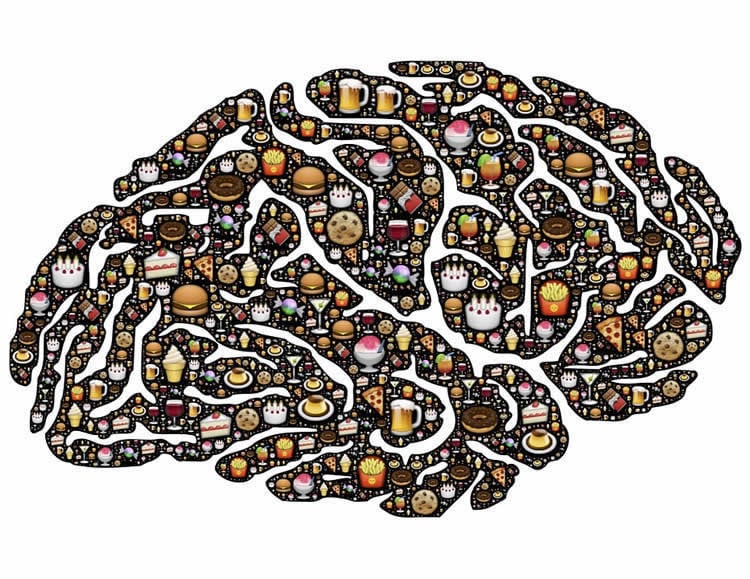Summary: Upon eating, dopamine is released in the brain at two different times, during ingestion and when the food reaches our stomach, researchers report.
Source: Cell Press.
We know a good meal can stimulate the release of the feel-good hormone dopamine, and now a study in humans from the Max Planck Institute for Metabolism Research in Germany suggests that dopamine release in the brain occurs at two different times: at the time the food is first ingested and another once the food reaches the stomach. The work appears December 27 in the journal Cell Metabolism.
“With the help of a new positron emission tomography (PET) technique we developed, we were not only able to find the two peaks of dopamine release, but we could also identify the specific brain regions that were associated with these releases,” says senior author Marc Tittgemeyer (@tittgemeyer), head of the Institute’s Translational Neurocircuitry Group. “While the first release occurred in brain regions associated with reward and sensory perception, the post-ingestive release involved additional regions related to higher cognitive functions.”
In the study, 12 healthy volunteers received either a palatable milkshake or a tasteless solution while PET data were recorded. Interestingly, the subjects’ craving or desire for the milkshake was proportionally linked to the amount of dopamine released in particular brain areas at the first tasting. But the higher the craving, the less delayed post-ingestive dopamine was released.

“On one hand, dopamine release mirrors our subjective desire to consume a food item. On the other hand, our desire seems to suppress gut-induced dopamine release,” says Heiko Backes, group leader for Multimodal Imaging of Brain Metabolism at the Institute, who is co-first author on the study with Sharmili Edwin Thanarajah.
Suppression of gut-induced release could potentially cause overeating of highly desired food items. “We continue to eat until sufficient dopamine was released,” Backes says but adds that this hypothesis remains to be tested in further studies.
Earlier experiments have demonstrated gut-induced dopamine release in mice, but this is the first time it has been shown in humans.
Funding: This research was funded the German Research Foundation in the Transregional Collaborative Research Center and the German Centre for Diabetes Research.
Source: Carly Britton – Cell Press
Publisher: Organized by NeuroscienceNews.com.
Image Source: NeuroscienceNews.com image is in the public domain.
Original Research: Abstract for “Food Intake Recruits Orosensory and Post-ingestive Dopaminergic Circuits to Affect Eating Desire in Humans” by Sharmili Edwin Thanarajah, Heiko Backes, Alexandra G. DiFeliceantonio, Kerstin Albus, Anna Lena Cremer, Ruth Hanssen, Rachel N. Lippert, Oliver A. Cornely, Dana M. Small, Jens C. Brüning, and Marc Tittgemeyer in Cell Metabolism. Published December 27 2018.
doi:10.1016/j.cmet.2018.12.006
[cbtabs][cbtab title=”MLA”]Cell Press”Your Brain Rewards You Twice Per Meal.” NeuroscienceNews. NeuroscienceNews, 27 December 2018.
<https://neurosciencenews.com/meal-brain-reward-10390/>.[/cbtab][cbtab title=”APA”]Cell Press(2018, December 27). Your Brain Rewards You Twice Per Meal. NeuroscienceNews. Retrieved December 27, 2018 from https://neurosciencenews.com/meal-brain-reward-10390/[/cbtab][cbtab title=”Chicago”]Cell Press”Your Brain Rewards You Twice Per Meal.” https://neurosciencenews.com/meal-brain-reward-10390/ (accessed December 27, 2018).[/cbtab][/cbtabs]
Abstract
Food Intake Recruits Orosensory and Post-ingestive Dopaminergic Circuits to Affect Eating Desire in Humans
Pleasant taste and nutritional value guide food selection behavior. Here, orosensory features of food may be secondary to its nutritional value in underlying reinforcement, but it is unclear how the brain encodes the reward value of food. Orosensory and peripheral physiological signals may act together on dopaminergic circuits to drive food intake. We combined fMRI and a novel [11C]raclopride PET method to assess systems-level activation and dopamine release in response to palatable food intake in humans. We identified immediate orosensory and delayed post-ingestive dopamine release. Both responses recruit segregated brain regions: specialized integrative pathways and higher cognitive centers. Furthermore, we identified brain areas where dopamine release reflected the subjective desire to eat. Immediate dopamine release in these wanting-related regions was inversely correlated with, and presumably inhibited, post-ingestive release in the dorsal striatum. Our results highlight the role of brain and periphery in interacting to reinforce food intake in humans.






